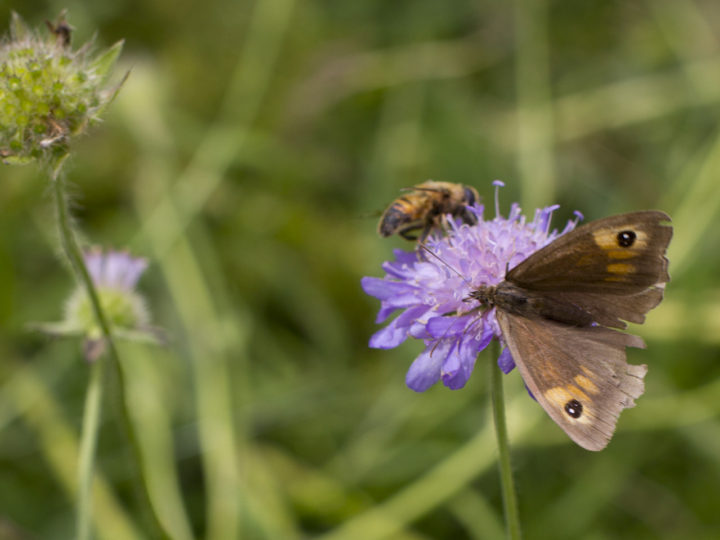
Mosses have been around a long time – about 450 million years. Compared to them lawn grasses are mere children, certainly no more than 100 million years old. This may explain why they are so hard to get rid of!
Mosses reproduce with air-born spores, not seeds and most favour damp, shady, acidic conditions. Because they form dense mats in favourable conditions, mosses will choke-out grasses in the lawn. During cool damp weather they may at least look green, but during hot weather they will dry-out and turn brown, making the area look very unsightly.
Moss is relatively easy to remove in the short-term. It is shallow rooted so will usually come up with raking and can then be physically removed. It is best to use a product like Green Up Mossfree or Green Up Lawn Sand to first kill the moss. These products, which contain iron, will also improve the colour of your lawn. The moss will quickly turn black and die, making it easier to see and to rake out. Follow the recommended rates for these products, apply during cooler, damp weather and water your lawn if no rain falls in the 48 hours following application.
These products will certainly remove moss, but you may find it coming back. In that case the moss is trying to tell you something – growing conditions in those areas are not ideal for lawn grasses. If you want to permanently get rid of moss in your lawn you will need to address these underlying conditions.
There are four issues that encourage moss growth. By tackling these you will get much closer to having a moss-free lawn.
Firstly there is pH. This is the acidity of your soil. Lawn grasses prefer soil with a pH between 6.5 and 7.0. Anything below that favours moss growth at the expense of grass. A simple pH test kit from your local Garden Centre will quickly tell you if this is the problem.
Raising the pH of your soil is quite easy to do. Garden Lime should be spread evenly over the lawn, preferably during the cooler seasons. As a rough guide you should apply 13 Kg per 100m2 to a sandy soil, around 38 Kg per 100m2 to a loam and around 65 Kg per 100m2 to a clay soil to raise the pH one unit (e.g. from 5.5 to 6.5). Use proportional amounts to raise the pH less, but if you need to raise it more than one unit, use two or more applications spread over a couple of years.
The second issue is soil fertility. If you have not been fertilizing your lawn regularly moss will thrive while your grass will languish. So you should establish a proper fertilizer programme. If your lawn is in generally bad condition, with moss, weeds and poor growth, then start with Green Up Feed & Weed + Mosskiller, which will solve all your problems at once. After that you should apply a general slow-release fertilizer every two months during the growing season, like Scotts Lawn Builder.
The third issue could be compaction. If you have a heavy, clay soil, over time it will become hard and dense. Grass roots will find it hard to penetrate the soil, while moss will grow happily. The solution is aeration, which is easy with the Yeoman Lawn Aerator. This tool will remove small plugs of soil from your lawn, allowing the soil to expand and open up. Water, fertilizer and grass roots will all penetrate the soil more effectively and your grass will become much more vigorous and able to compete with the moss.
The final issue is shade. If you have a lot of trees, especially evergreens, the dense shade will discourage grasses. You may have the wrong grass species, so after removing the moss, over-seed with our Premium Shade seed mixture. This will introduce shade-tolerant grasses like bentgrass into the area, which will help give a denser, moss-resistant lawn in those very shady spots.
If you do have such dense shade that no grass will grow well in, there may still be a solution. You may have seen photographs of the famous Moss Gardens of Japan. Provided you can keep the area moist at all times, you might want to consider removing all the remaining grass and weeds and just enjoying the moss. Roundup carefully applied to just these areas will kill all other plants except moss, which is a lot easier than the hand-weeding that is traditionally done in Japan by women to keep these areas free of other plants!




